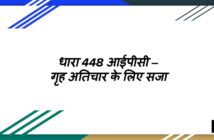A brand or creative work of the company or person is the asset of a person, business, enterprise. Therefore, protecting intellectual property rights by registering brand names or creative work is essential. Are you looking to register your brand name or protect your creative work but don’t know how to do it?
This article will explain the process of filing a trademark/copyright application, trademark and copyright, different trademark application status, the importance of registration of trademark/copyright, and the validity of their registration.
What is Trademark?
Section 2 (zb), Trade Marks Act, 1999 defines “trademark” as a mark that graphically represents and distinguishes goods or services of a person from those of others, including packaging of goods, the shape of goods, and combination of colours. In addition, it is used to indicate that the person using the mark has a right as a proprietor or permitted user to use the mark in the course of business.
What is Copyright?
Section 14, Copyright Act, 1957 states that a “copyright” means an exclusive right given to the copyright owner to do or authorize another person to do any act in relation to the work. Such acts include; reproducing, issuing copies, performing in public, translating, adapting, sound recording or cinematograph films, selling or giving on commercial rent, storing, etc.
What is the importance of registration of Trademark/Copyright?
Registration of a Trademark/Copyright is essential as it acts as an asset of the company. The advantages of getting trademark/Copyright registered are as follows:
Protection of Intellectual Property
Registration of a trademark/copyright gives the owner an exclusive right to use the trademark/copyright work across the nation. It provides legal protection against any misuse of the trademark or logo of the company. A registered intellectual property can be upheld in any court of law. Once the work is registered, no one can copy the copyrighted work, except with the author’s permission of such creative work.
Goodwill and Prestige
A registered trademark/copyright builds goodwill and prestige of the owner and adds value to the name of the owner/author. First, it gets associated with the quality of goods or services. Later, the brand becomes the symbol of quality for the company.
Powerful deterrent
A registered trademark/copyright is a powerful deterrent that prevents others from using the mark identical or similar to the registered trademark. The trademark owner can advertise the goods or services with the registered trademark and use it for its business.
Suppose any person wishes to use the same or similar mark. In that case, the search report will disclose that it is already registered with the company. Thus, preventing the person not to use that registered mark. Only the author of the registered copyright work has the power to translate, disseminate, adapt and reproduce the work.
Legal Protection
A registered trademark/copyright gives the owner/author of the mark/work authority to sue and recover damages for any infringement of trademark/copyright in any court of law. In addition, it will prevent another person from passing on the goods or services as that of another person.
What is the process of filing a trademark/copyright?
An application has to be filed before the office of the Trade Marks Registry within whose jurisdiction the place of business is situated. Now, with the advancement of technology, one can easily make an application online.
We will now look into the process of filing a trademark.
1) Trademark Search:
The first step involved in the registration is the Trademark search. Before applying for trademark registration, one should conduct a thorough search of the availability of the trademark. The trademark search enables a person to get the idea of all the possible similar or identical trademarks filed before the Trademark Registry.
2) Trademark Application:
The second step is to file a trademark application in the form TM-A before the Trademark Registry. The application must clearly describe the goods or services along with the prescribed fees and documents. As stated earlier, the trademark application can be made personally to the office of the Trademark Registry or through an online portal of the Controller General of Patent, Design and Trademarks. At this stage, the applicant can use the TM symbol.
3) Trademark Examination:
Once an application for trademark registration is made, the trademark is sent to the registrar for examination. The registrar will then examine the trademark submit the examination report to the concerned applicant. The examination report contains the registrar’s decision, namely, acceptance, refusal, or acceptance with conditions, as the registrar may deem fit.
In the event of refusal, the applicant has to appear before the registrar to address the objection. If the registrar is satisfied with the justification, the trademark will be forwarded for publication in the trademark journal. The applicant can further appeal before the Intellectual Property Appellate Board if it is not satisfied with the registrar’s decision.
4) Trademark Journal Publication:
The next step after the examination is trademark journal publication. Once the registrar accepts the trademark application, the trademark is published in the Trademark Journal Publication to attract any objections from the public.
a) If there is no objection in relation to the proposed trademark within 90 days from the date of publication, then the registrar will register the trademark within 12 weeks.
b) If a third party opposes the trademark, the Trademark Hearing Officer will hear both the parties and decide whether the trademark application should be accepted or rejected. The decision of the Trademark Hearing Officer can be appealed.
5) Trademark Registration:
This is the final stage of the trademark filing process, the registrar will issue a Trademark Registration Certificate if there is no opposition or objection to the trademark application. After registration of the trademark, the owner of the trademark can use the ® symbol to the registered trademark or logo. Hence, the owner of the trademark gets the exclusive right to use the trademark for ten years.
The entire process of registration of a trademark can take approximately 1- 2 years to complete.
Now that we know the process of filing a trademark, we will look into copyright registration. Like trademark registration, copyright registration can be done in person or through an online portal at the Copyright Office.
1) Copyright Application:
Firstly, an application for copyright registration has to be made on Form XIV to the Registrar of Copyrights describing the work that is desired to be registered, along with the prescribed fees and documents. Application for registration of copyright varies with the type of work.
2) Diary Number:
On applying for copyright registration, the applicant’s diary number is issued.
3) Examination:
The application is then reviewed by the Copyright Examiner. If there is any objection to the copyright application, send a notice to both parties for a hearing. Such objection has to be made within 30 days from the date of application for registration of copyright.
4) Registration:
Once the copyright examiner is satisfied and there are no objections or discrepancies regarding the copyright application, the Copyright Officer will issue a Registration Certificate to the applicant. Once the copyright is registered, the owner of the copyrighted work can use © symbol for its creative work.
The entire process of copyright registration can take approximately less than a year to complete, provided there are no objections or other issues.
How to check the application status of a trademark/copyright?
On making an application to register a trademark, one must keep checking the status of the trademark application. So now, we will go through the steps to check the status of the trademark.
1) Firstly, you can go to the website at https://ipindiaonline.gov.in/eregister/eregister.aspx to check your e-register and application status.
2) Select the option named ‘Trade Mark Application/Registration Mark’. Then click on the option named ‘National IRDI Number’.
3) Now, you have to enter your Trade Mark/Application Number, the captcha code that is provided, and then click on the ‘View’ option
4) The webpage displays the gist of your Trade Mark Application. You need to click on the highlighted trademark No. to view your Trade Mark Application status.
What are the different Trademark Application Statuses?
The Trade Mark Application status can be either of the following:
1) New Application: When the registrar receives the application and is not yet inquired, the status reads ‘New Application’. It is the first stage of application.
2) Sent to Vienna Codification: when the application is sent to Vienna Codification to check the international standards for a logo or other elements.
3) Formalities check pass: when all the documents submitted along the application are accepted.
4) Formalities check fail: if the documents submitted along the application are insufficient or any issues or lack of clarity with the document, you get this status.
5) Marked for Exam: an application is ‘Marked for Exam’ means that the application is forwarded to the Trademark Examiner to scrutinize the documents and ensure that the trademark application is complete.
6) Objected: this status is given when the Trademark Examiner has an objection to the trademark application. An Examination Report is provided to the applicant at this stage, which should be answered within a given period (30 days). If the applicant fails to reply to the Examination Report, the trademark application status will read as ‘Refused.’
7) Refused/Abandoned: when the examiner is not satisfied with the reply to the Examination Report, if the applicant fails to reply to the Examination Report, you get this status.
8) Accepted and advertised: It means all the formalities and examination is complete, so the trademark is accepted and advertised in the Trademark Journal to attract any opposition from the public.
9) Opposed: We get this status when a third party opposes the trademark application once advertised in Trademark Journal.
10) Withdrawn: when the applicant does not respond to the oppositions raised by the third party, the application status reads as ‘Withdrawn.’
11) Registered: This is the final stage of trademark application. You get this status once the trademark is accepted, and no opposition is received against the trademark, then you get this status.
12) Removed: The application gets this status if the trademark is issued a Trademark Registration Certificate. The trademark owner does not use the trademark for five consecutive years or renew the trademark registration once it expires.
Validity of Trademark/Copyright after registration
A registered trademark is valid for ten years. It can be renewed after ten years by making an application within six months from the date of expiry of the registration.
The validity of copyright depends on the nature of the work. So, copyright registration is valid for 60 years in most of the copyright. However, the copyright for performer’s rights is for 50 years, and broadcast reproduction rights of copyright work are for 25 years. There is no renewal of copyright.
Conclusion
Trademark/Copyright protects the owner of the work against any misuse or unauthorized use of the trademark or copyright work. So, it is advisable to register your brand name or your work to prevent any other person from using it. Thanks to the advancement of technology, now you can file your trademark or copyright application online.

